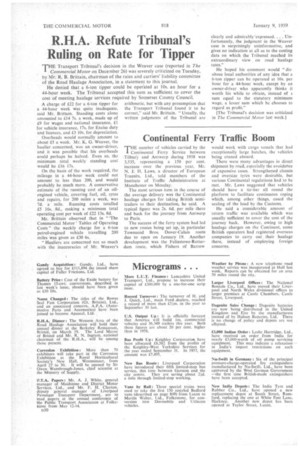Continental Ferry Traffic Boom
Page 74

If you've noticed an error in this article please click here to report it so we can fix it.
THE number of vehicles carried by the Continental Ferry Service between Tilbufy and Antwerp during 1958 was 3,535, representing a 150 per cent. increase over the previous year, Mr. N. J. H. Laws, a director of European Transits, Ltd., told members of the Institute of Traffic Administration at Manchester on Monday.
The most serious item in the course of the average delivery was the Continental haulage charges for taking British semitrailers to their destination, he said. A typical figure was 2s. 6d. per mile there and back for the journey from Antwerp to Paris.
The success of the ferry system had led to new routes being set up, in particular Townsend Bros. Dover-Calais route due to open on January 19. Another development was the Felixstowe-Rotterdam route, which Fishers of Barrow
would work with cargo vessels that had exceptionally large hatches, the vehicles being craned aboard.
There were many advantages in direct shipment by road, especially the avoidance of expensive cases. Strengthened chassis and oversize tyres were desirable, but various Continental regulations had to be met. Mr. Laws suggested that vehicles should have a tie-bar all round the platform to facilitate continuous roping which, among other things, eased the sealing of the load by the Customs.
He said a considerable amount of return traffic was available which was usually sufficient to cover the cost of the journey back. However, owing to high haulage charges on the Continent, some British operators had registered overseas companies to carry out their haulage there, instead of employing foreign concerns.
























































































































